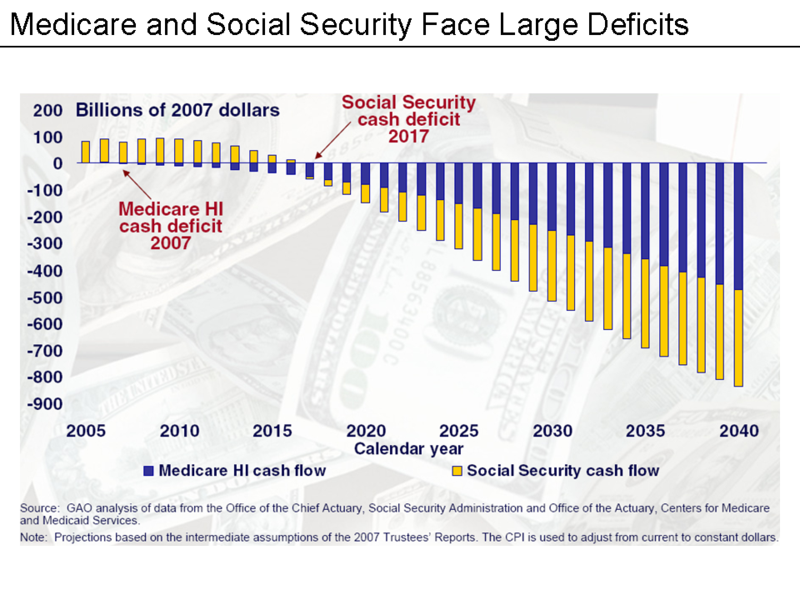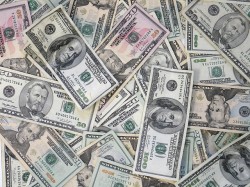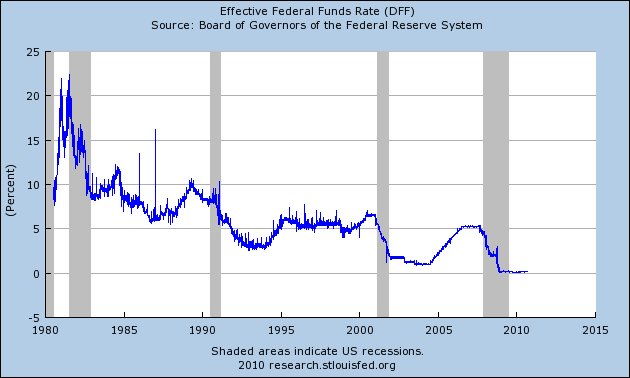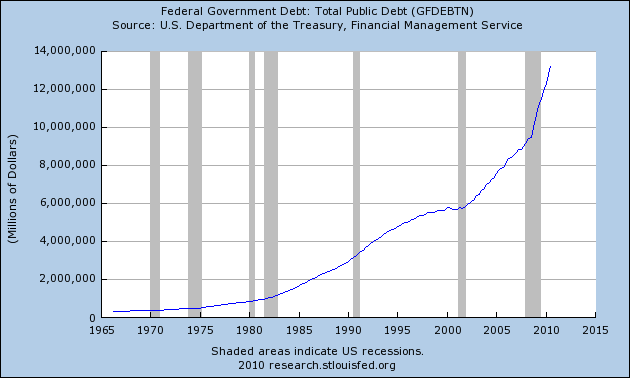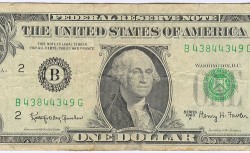 In a surprise move, the co-chairs of Barack Obama’s national debt commission released their preliminary proposals to the media on Wednesday. The proposals are actually quite modest – they recommend that nothing be implemented until 2012 because of the weak economy, and their plan would not balance the federal budget until 2037 – but almost as soon as it was released Democrats and Republicans both started screaming bloody murder about how they would not support it. The truth is that virtually none of our politicians are willing to make the hard choices that would be necessary to get the national debt under control. Today, the U.S. national debt is rapidly approaching 14 trillion dollars and it is growing at an exponential rate. It is the single largest debt in the history of the world, and it has increased in size for 53 years in a row. It would be very difficult to understate the true horror of the debt that the U.S. federal government has accumulated. So what is the solution? As you will see below, there isn’t one. In fact, it will be an absolute miracle if our leaders are able to even slow down the rate at which the debt is growing in the years ahead.
In a surprise move, the co-chairs of Barack Obama’s national debt commission released their preliminary proposals to the media on Wednesday. The proposals are actually quite modest – they recommend that nothing be implemented until 2012 because of the weak economy, and their plan would not balance the federal budget until 2037 – but almost as soon as it was released Democrats and Republicans both started screaming bloody murder about how they would not support it. The truth is that virtually none of our politicians are willing to make the hard choices that would be necessary to get the national debt under control. Today, the U.S. national debt is rapidly approaching 14 trillion dollars and it is growing at an exponential rate. It is the single largest debt in the history of the world, and it has increased in size for 53 years in a row. It would be very difficult to understate the true horror of the debt that the U.S. federal government has accumulated. So what is the solution? As you will see below, there isn’t one. In fact, it will be an absolute miracle if our leaders are able to even slow down the rate at which the debt is growing in the years ahead.
The deficit reduction plan put forward by Erskine Bowles, a former White House chief of staff under Bill Clinton, and Alan Simpson, a former Republican Senator from Wyoming does not even have support from the rest of Barack Obama’s national debt commission. There is no way that either most Democrats or most Republicans in Congress will ever accept it. But at least the Bowles-Simpson plan is making headlines around the world and has brought the national debt back to the center of the political debate in this country.
In some ways, the Bowles-Simpson plan is a complete and total fantasy. For example, it assumes that the U.S. economy is going to fully recover and will experience solid growth for many years to come. That simply is not going to happen. The prosperity of the last couple of decades has been fueled by the biggest debt bubble in the history of the world, and there is no way that is going to continue. At some point the U.S. economy is going to fall apart like a house of cards.
But even if the U.S. economy could magically meet the projections contained in the Bowles-Simpson plan, it still contains a whole host of “poison pills” which make it completely and totally unacceptable to both political parties….
*The plan calls for deep cuts to U.S. military spending. The Republicans will never go for that.
*The plan reduces Social Security benefits to most retirees in future decades. The Democrats will never go for that.
*The plan raises the Social Security payroll tax cap to $190,000. The Republicans will never go for that.
*The plan envisions a very slow rise in the retirement age from 67 to 68 by 2050 and finally to 69 by 2075. The Democrats will never go for that.
*The plan includes a “less generous” annual cost-of-living adjustment for Social Security benefits. Considering the fact that Social Security benefits are already not going to see an increase this upcoming year, this proposal is likely to upset a large number of seniors.
*The plan calls for the federal tax on gasoline to approximately double by 2015. The Republicans would never go for that, and if that was ever implemented it would have a very serious negative impact on the economy.
*The plan would eliminate the deductibility of mortgage interest payments. Millions upon millions of homeowners would be absolutely furious.
*The plan would tax health benefits provided by employers. That would make millions of people very angry.
*The plan also calls for huge cuts in farm subsidies. There are a lot less farmers than there used to be, but that would still be extremely unpopular.
But the truth is that hard choices need to be made. The national debt is spinning wildly out of control. The U.S. government is essentially bankrupt.
Unfortunately, the majority of the federal budget is made up of entitlement programs. Entitlement programs are not subject to budget freezes or budget cuts – unless Congress changes the underlying laws. But any change to major entitlement programs would potentially upset millions of voters.
Not that there are not other areas that could be cut. Today, the average federal worker earns far more than the average private sector worker. In fact, wages for federal workers have been escalating at a frightening pace. In 2005, 7420 federal employees were making $150,000 or more per year. Today, 82,034 federal employees are making $150,000 or more per year. That is more than a tenfold increase in just five years.
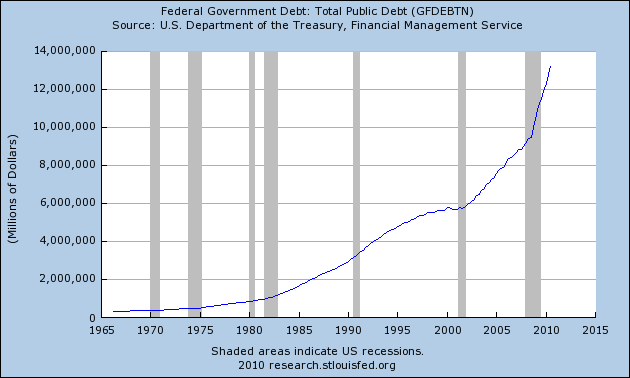
But any major cuts to federal spending are going to really upset a lot of voters, and our politicians really, really like to get re-elected. The kinds of cuts that are really needed will never get through the Democrats in Congress and the Republicans in Congress and signed into law by Barack Obama. There are just way too many things that both major political parties consider to be “untouchable”.
Meanwhile, the U.S. government debt continues to explode. The debt is already so big, interest on that debt is scheduled to escalate so dramatically, and we have made so many unsustainable promises regarding Social Security and Medicare that it is basically impossible to balance the federal budget at this point. If serious attempts were actually made to balance the budget in 2011, it would likely create a financial panic, and suddenly sucking over a trillion dollars in federal spending out of the system would crash the economy.
The following are 15 facts that reveal just how obscene the U.S. national debt has become, and why it is now basically impossible to balance the budget of the U.S. government at this point….
#1 On average, the U.S. government accumulates about 4 billion dollars more debt each day.
#2 In just the last 30 years the U.S. government has accumulated 12 trillion dollars more debt.
#3 According to a U.S. Treasury Department report to Congress, the U.S. national debt will climb to an estimated $19.6 trillion by 2015.
#4 The U.S. government has to borrow 41 cents of every dollar that it currently spends.
#5 If the U.S. government was forced to use GAAP accounting principles (like all publicly-traded corporations must), the annual U.S. government budget deficit would be somewhere in the neighborhood of $4 trillion to $5 trillion.
#6 The Congressional Budget Office projects that the health care bill recently passed by Congress will add an additional trillion dollars to our debt over the next ten years.
#7 Approximately 57 percent of Barack Obama’s 3.8 trillion dollar budget for 2011 consists of direct payments to individual Americans or is money that is spent on their behalf. Any attempt to reduce those payments will make a lot of people very angry.
#8 According to the Congressional Budget Office, in 2010 the Social Security system will pay out more in benefits than it receives in payroll taxes. That was not supposed to happen until at least 2016.
#9 Back in 1950, each retiree’s Social Security benefit was paid for by approximately 16 workers. Today, each retiree’s Social Security benefit is paid for by approximately 3.3 workers. By 2025 it is projected that there will be approximately two workers for each retiree.
#10 According to an official U.S. government report, rapidly growing interest costs on the U.S. national debt together with spending on major entitlement programs such as Social Security and Medicare will absorb approximately 92 cents of every dollar of federal revenue by the year 2019. That is before a single penny is spent on anything else.
#11 Right now, interest on the U.S. national debt and spending on entitlement programs like Social Security and Medicare falls somewhere between 10 percent and 15 percent of GDP each year. By 2080, they are projected to eat up approximately 50 percent of GDP.
#12 The present value of projected scheduled benefits exceeds earmarked revenues for entitlement programs such as Social Security and Medicare by about 46 trillion dollars over the next 75 years.
#13 After analyzing Congressional Budget Office data, Boston University economics professor Laurence J. Kotlikoff concluded that the U.S. government is facing a “fiscal gap” of $202 trillion dollars.
#14 At our current pace, the Congressional Budget Office is projecting that U.S. government public debt will hit 716 percent of GDP by the year 2080.
#15 Sometimes we forget just how big a trillion dollars is. If right this moment you went out and started spending one dollar every single second, it would take you more than 31,000 years to spend one trillion dollars. The U.S. national debt increased by more than a trillion dollars last year, it will increase by more than a trillion dollars this year and it is being projected to increase by more than a trillion dollars the following year.
We are literally drowning in debt. We have been living beyond our means for decades, and most Americans do not understand that eventually that is really, really going to start catching up with us.
Already, the United States is fading as an economic power. According to the Conference Board, China will surpass the United States and will become the biggest economy in the world by the year 2012.
That is just two years away.
So how did we get into such a mess? Well, it all goes back to the creation of the Federal Reserve in 1913. The Federal Reserve was created to enslave the United States government in an endlessly growing spiral of debt from which it would never be able to escape.
That is exactly what has happened. Our money is actually debt-based. That is why they are called “Federal Reserve notes”. When the Federal Reserve creates more money for the U.S. government to borrow, it does not also create money for the interest to be paid on that debt. Eventually the U.S. government is forced to borrow even more money just to keep up with the game.
Today, if you gathered up all of the physical currency from every bank, every business and every individual in the United States, you would not even put much of a dent in the national debt. That is how bad things have gotten.
A lot of people got elected to Congress by promising to balance the federal budget and by promising to start reducing the U.S. national debt. But those ships have sailed. The U.S. government will always have a national debt under the Federal Reserve system, and things have gotten so bad financially for our government that it is now virtually impossible to even balance the budget for a single year.
In the 90s, the Clinton administration and the Republican Congress briefly balanced the federal budget by “borrowing” massive amounts of money from the Social Security surplus. Using GAAP accounting, the budget was not even close to balanced at that point, but many point to that time as a moment when the U.S. government was at least somewhat fiscally responsible.
Well, the Social Security surplus is gone forever. Now we have a Social Security deficit which is only going to explode in size in future years.
In addition, the financial condition of the U.S. government has deteriorated enormously over the past 10 years, and things only look worse the further you look into the future.
Meanwhile, the U.S. economy is falling to pieces all around us. We are experiencing our longest bout of serious long-term unemployment since the Great Depression, 42 million Americans are on food stamps and the United States is being deindustrialized at a pace that is mind blowing.
As America continues to get poorer, the U.S. government is going to really struggle to raise revenue. But interest payments and financial obligations are projected to escalate wildly. At this point it is really hard to envision a scenario that does not lead to the eventual financial collapse of the U.S. government.
So do you think that you have a solution to this gigantic mess? If so, feel free to post it in the comments section below….
 It seems with each passing year the madness on Black Friday gets even worse. This year, there were reports of fights and rioting from coast to coast. It was estimated that over 180 million U.S. shoppers headed for the stores on Friday, and whenever you get that many people together there are going to be problems. But just how crazed ordinary Americans are getting over saving a little bit of money is deeply disturbing when you really start thinking about it. If people will go this wild just to save 40 percent on a television set, then what in the world are they going to do when they have been without food for a couple of days? If Americans will act like psychotic animals just to save 50 bucks, then what in the world will they do when they have lost everything and are desperate to survive?
It seems with each passing year the madness on Black Friday gets even worse. This year, there were reports of fights and rioting from coast to coast. It was estimated that over 180 million U.S. shoppers headed for the stores on Friday, and whenever you get that many people together there are going to be problems. But just how crazed ordinary Americans are getting over saving a little bit of money is deeply disturbing when you really start thinking about it. If people will go this wild just to save 40 percent on a television set, then what in the world are they going to do when they have been without food for a couple of days? If Americans will act like psychotic animals just to save 50 bucks, then what in the world will they do when they have lost everything and are desperate to survive?



